
Eco-artists in Hong Kong wage war on plastic through works that raise awareness of issues both local and global
More art is being created worldwide to build awareness and stimulate dialogue on environmental issues. From Hong Kong’s ArtVplastic project to Disney characters in distress, we check out the latest in eco-art
“This is what makes me angry,” says artist Martin Lever as he extracts a “useless” stirrer from his coffee. “Single-use plastic – it’s got to end.”
We’re at a cafe in Causeway Bay, a busy shopping district on Hong Kong Island, and Lever is on a mission. It is one motivated by the worrying amount of waste the ocean regularly coughs up near his home on rural Lantau, an outlying island in the Chinese special administrative region.
Hong Kong’s plastic waste epidemic, and why it’s bad news for all of us
He wants a rethink on single-use plastic items that are used only once before being chucked out or recycled: thing like bags, straws, coffee stirrers, water bottles and most food packaging.
“Plastic waste in our seas is an issue that hits home hard for me, living on the beach in beautiful Pui O, and regularly seeing the problem first-hand,” says Lever, whose 2015 series of abstract “Groundscapes” paintings was inspired by some of Hong Kong’s best-loved beaches.
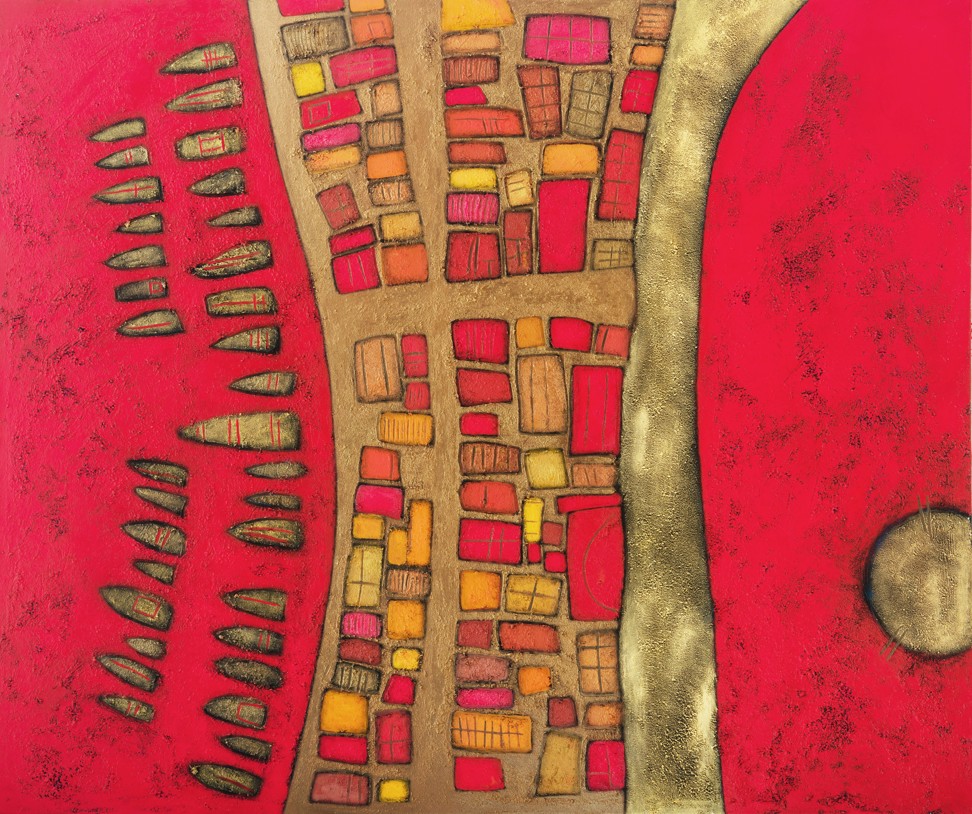
Lever reels off some depressing numbers. According to the World Economic Forum, 311 million tonnes of plastic was produced worldwide in 2014, a figure that continues to increase every year. About eight million tonnes of that ends up in our seas annually, according to research published in the journal Science in 2015.
He says small behavioural changes, such as cafes banning coffee stirrers and plastic straws, can make a big difference. Plastic straws have become somewhat of a poster child for environmentalists worldwide, prompting action to ban them (Costa Rica has done so, while Taiwan and Britain are working on plans to follow suit).
Lever has also joined forces with fellow Hong Kong artist and photographer William Furniss to create and launch the ArtVplastic project on plasticfreeseas.org, an environmental charity and online learning and information platform. The platform will sell Lever and Furniss’ art to raise funds to create interactive, locally relevant content and lesson-planning tools designed to help teach change to young people in Hong Kong.

Lever says this creates a happy cycle. “Big corporations purchase art from the plasticfreeseas.org platform and funds from the purchases go towards environmental education.”
Furniss says that addressing the issue of plastic in our oceans is paramount. “Solving this problem is a test of character for our species. If we don’t fix this problem, we are doomed.”
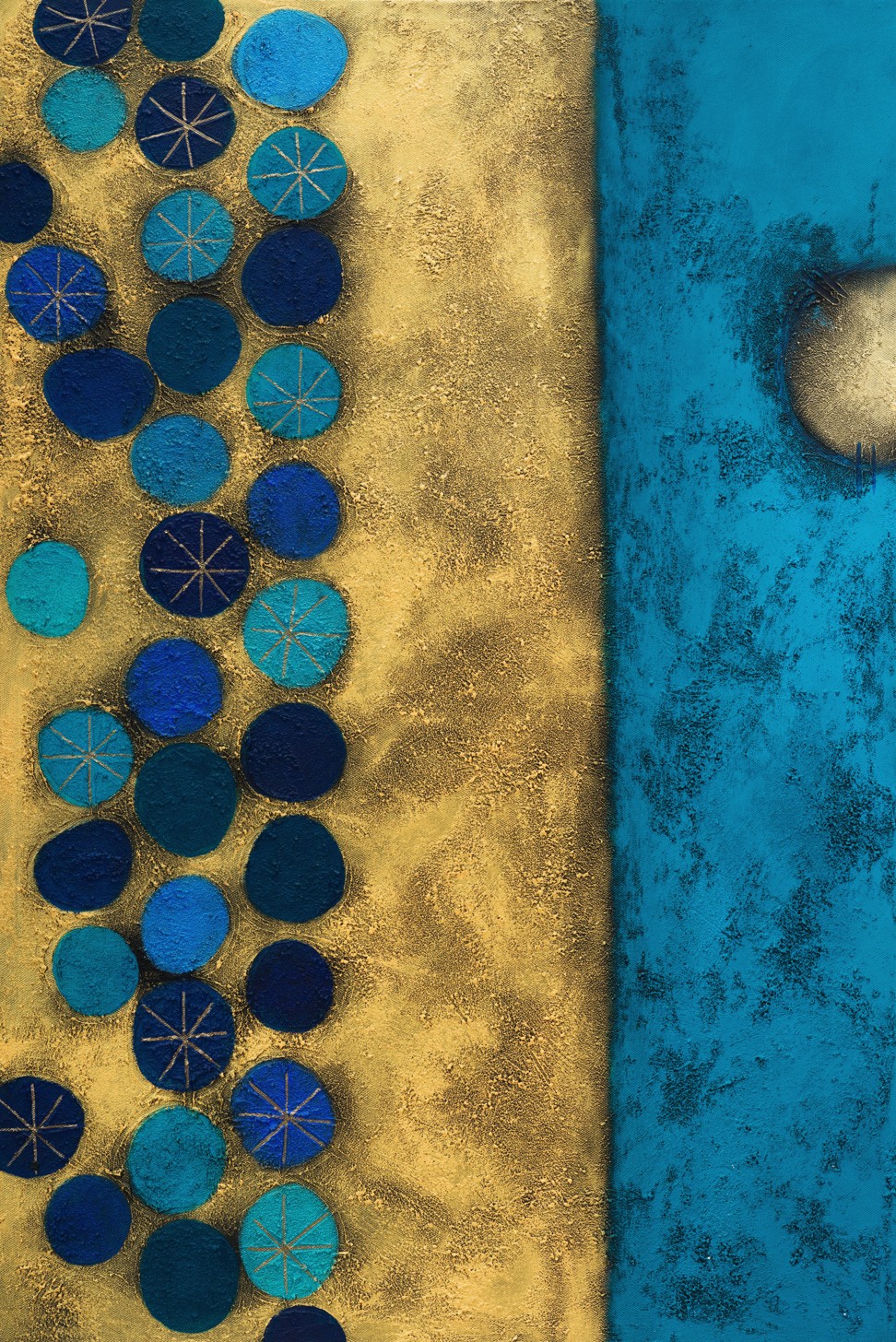
What Lever and Furniss are doing is part of an eco-art movement that is gaining momentum, not just in Hong Kong but worldwide. It is a movement that sees art not just about aesthetics, but also about stimulating dialogue about environmental issues. From climate change to air pollution and species depletion, artists are becoming increasingly active in environmental and social issues.
Nature has inspired artists for thousands of years, but today it is not so much about painting an ocean or a tree, but asking how we can improve that ocean or save that tree. And with sustainability an important concept for companies today, it is not surprising that the art world is taking an interest in the environment.

One of the pioneers of eco-art was Australian sculptor John Davis, also known as the “Twig Man”. Throughout the 1970s, ’80s and ’90s, he used simple materials – twigs bound with thread, stitched calico, glued paper – to create unpretentious works that reflected the environment.
One of the most celebrated examples of environmental art is 7000 Oaks by German artist Joseph Beuys, who in 1982 raised environmental awareness by planting 7,000 oak trees in the German city of Kassel.
Cai Guoqiang, one of China’s most globally celebrated artists, made a statement in 2014 with his work The Ninth Wave. It featured a fishing boat carrying 99 stuffed animals, portrayed in various states of illness. The work was a response to both the country’s severe smog problem and an incident a year earlier when 16,000 dead pigs were discovered floating down the Huangpu River. He later showed the work in Shanghai, where the pigs were found.

Currently on show at the NTU Centre for Contemporary Art Singapore is a group exhibition called “The Oceanic” that focuses on the environmental health of the Pacific Ocean archipelagos.
On the Indonesian island of Sumatra, a project called “Splash and Burn” looks at the issue of palm oil in Indonesia. It is spearheaded by Ernest Zacharevic, a Lithuanian artist based in Malaysia’s Penang state, who is tackling the issues of haze, deforestation, and human and animal displacement through his art.
If my art can move people and help inspire change, that’s a good thing, right?
Dutch artist Herman de Vries often gets naked to spread his green message. British artist Andy Goldsworthy, meanwhile – known for his site-specific creations using flowers, leaves, mud and snow – often uses his hands, teeth and even saliva to assemble works.
Then there’s Hungarian-born Agnes Denes, who is seen as the grandmother of the early environmental art movement. For her most famous artwork, Denes spent six months planting a field of golden wheat on two acres of rubble-strewn landfill near Wall Street in Manhattan.
American artist and former Disney animator Jeff Hong turned to some familiar faces to spread the green gospel, superimposing popular cartoon characters from his previous company on real photographs showing nature in distress.
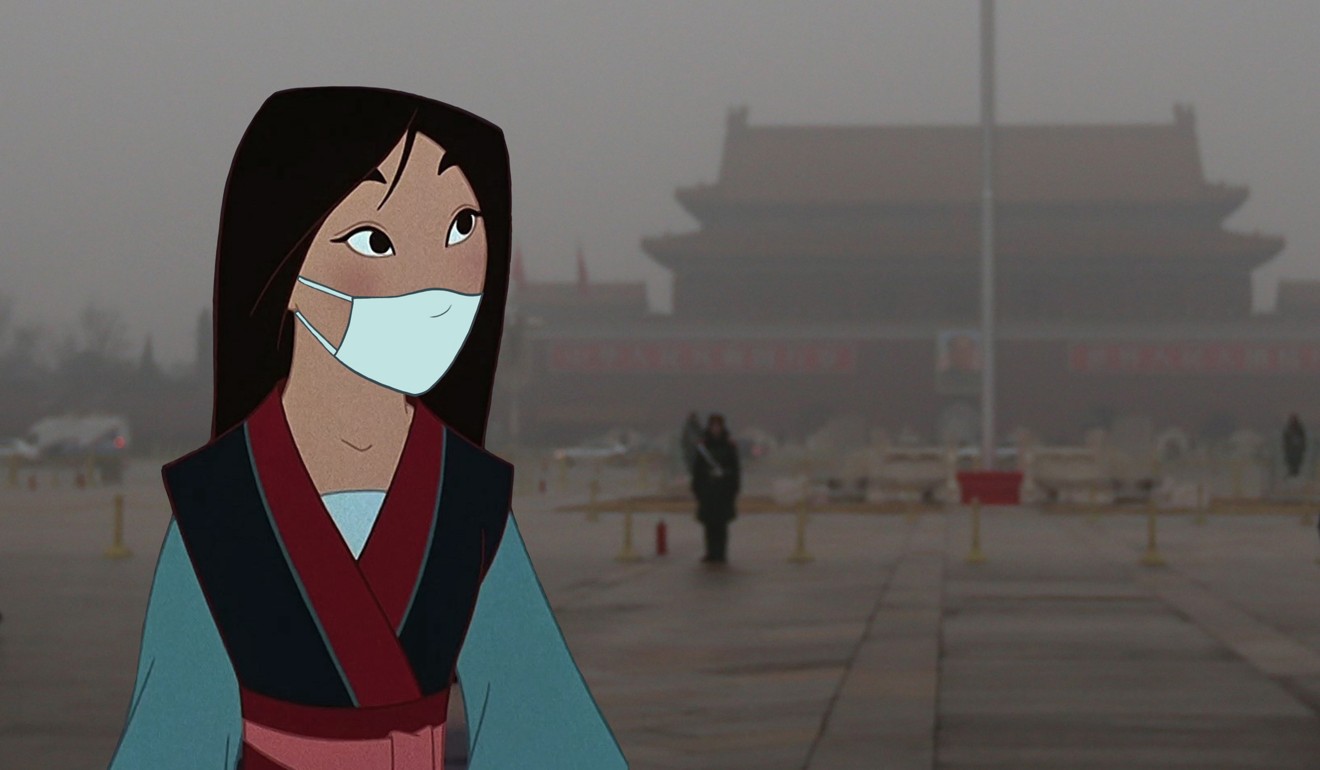
In his Mulan piece, he takes the main character from Disney’s popular 1998 animation and puts her in heavily polluted Tiananmen Square wearing a face mask. In another work, he casts Frozen’s Queen Elsa adrift on an ice float – a scene reminiscent of images of polar bears similarly stricken that are used to highlight the issue of climate change. In another, Dumbo the elephant is seen cowering in front of a whip-wielding circus trainer. In another, the Little Mermaid crawls through an oil spill on a beach.
“I used these characters because they are instantly recognisable all over the world,” Hong says. “These are movies we grew up with and have an emotional connection with … I think what has made my work so powerful is seeing these characters in vulnerable situations that are largely caused by humans.”
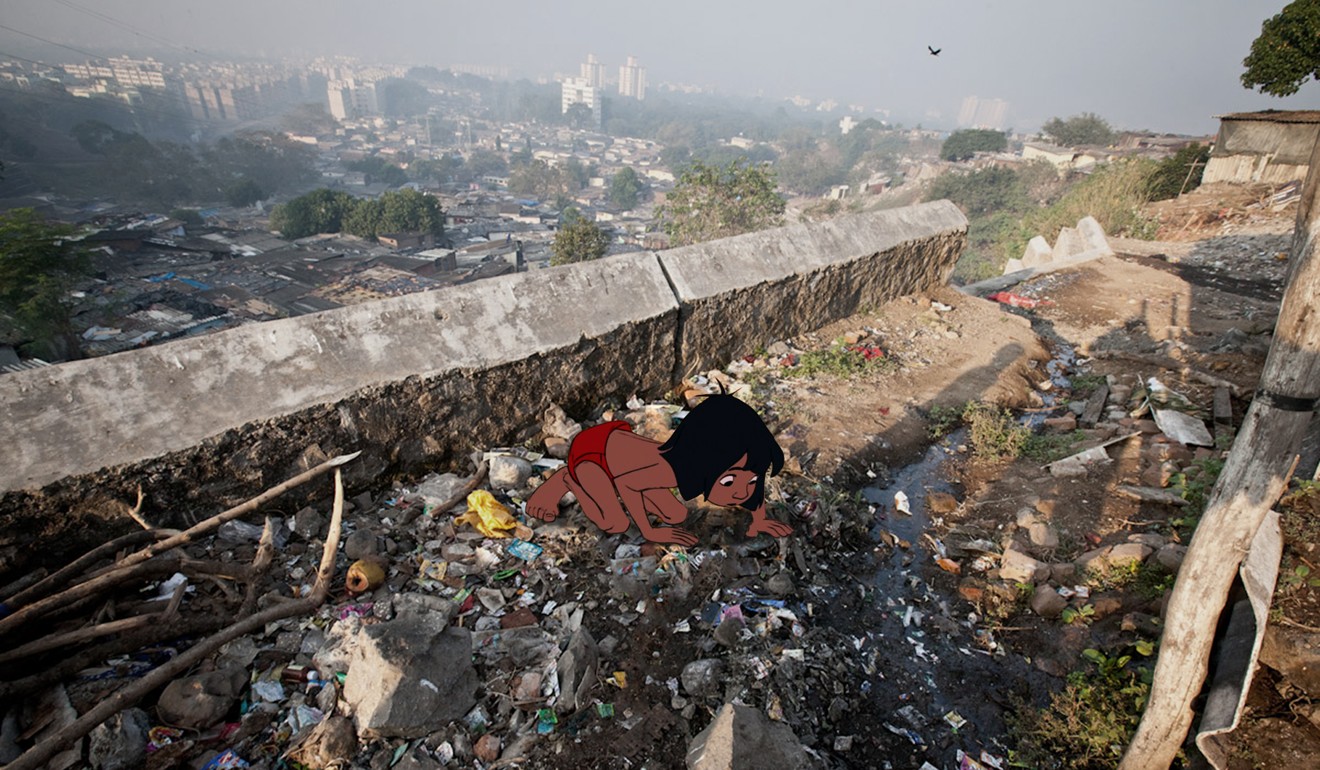
Hong says that artists play important roles in spreading social and political messages by starting dialogues within communities and spotlighting topics that are important to them.
“I feel my work has been a success in that regard because I hear from teachers and students around the world who have used my work as a teaching tool for environmental studies in either lesson plans or the basis of thesis papers.”
Hong Kong has hosted many eco-art exhibitions, none more memorable than in 2014 when French sculptor Paulo Grangeon brought his travelling exhibit Pandas on Tour – 1,600 papier-mâché bears, meant to represent the number of pandas left on the planet – to the city.
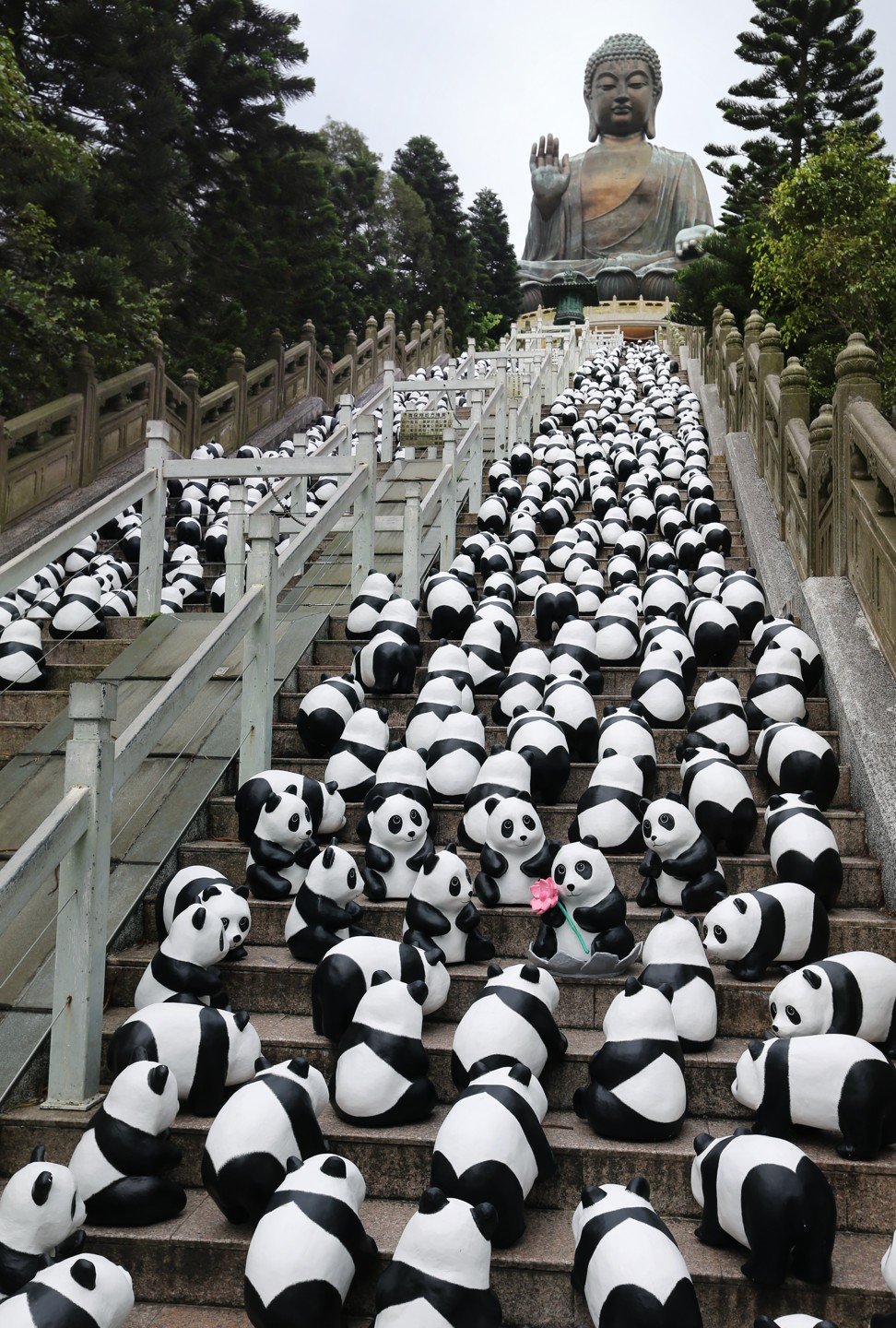
In 2017, the Maritime Museum in Central district, in collaboration with conservation group WildAid, hosted “On Sharks and Humanity”, a powerful exhibition showcasing 34 international and local artists which aimed to raise awareness about the shark fin trade. WildAid says the trade and overfishing together claim up to 73 million sharks annually, with Hong Kong accounting for about half of the world’s shark-fin market.
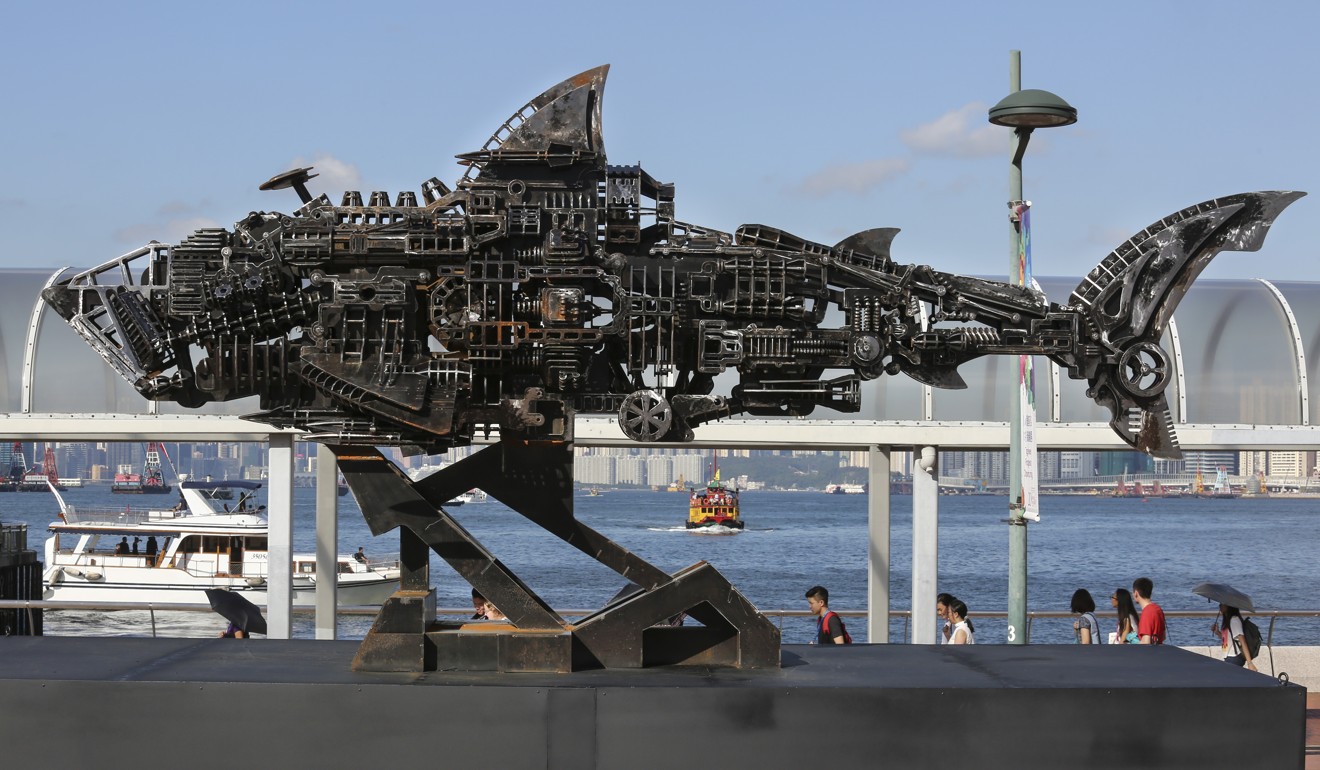
In 2016, the Hong Kong-registered charity Ocean Recovery Alliance launched the Grate Art project, which saw ceramic tiles with environmental messages placed on storm drains around Hong Kong to highlight the link between drains and ocean pollution.
Hong Kong art project highlights link between drains and ocean pollution
There is also local artist William Tong, whose paintings explore the city’s social and environmental issues, while Liina Klauss, a German expat in Hong Kong, collects waste washed onto Hong Kong’s beaches and upcycles them into beautiful works of art.

Starting this month on March 21 and running to April 1, the Fish Pond Sustainable Art Festival will again showcase the strong bond between nature and art, having also done so in January. The Hong Kong Birdwatching Society is also doing its eco-art bit with the launch last year of Birds Eco-Art, a project that combines birdwatching with art creation.
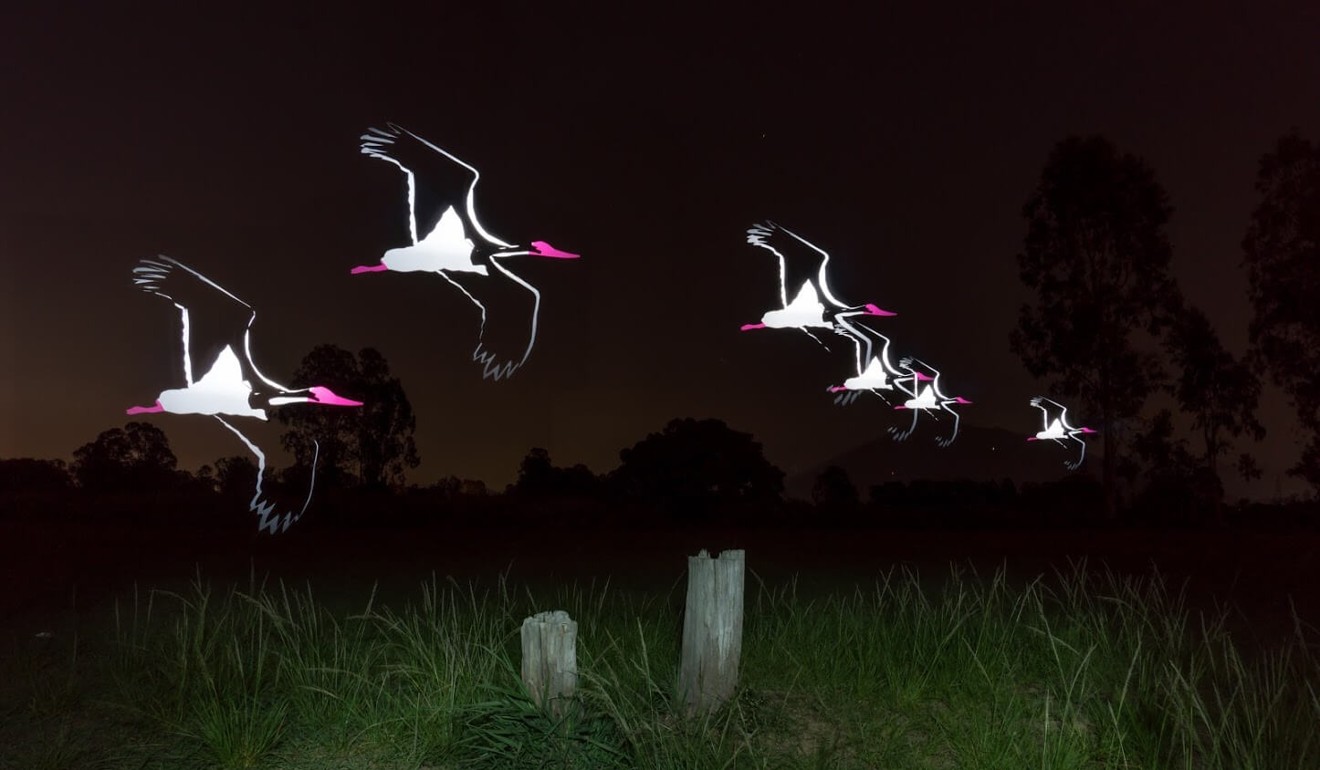
The list goes on. But for father-of-one Lever, the motivation doesn’t just come from a desire to keep Hong Kong’s beaches clean. He wants to leave a better Hong Kong for future generations.
“If my art can move people and help inspire change, that’s a good thing, right?”
ArtVplastic project artwork can be viewed at Plastic Free Seas

